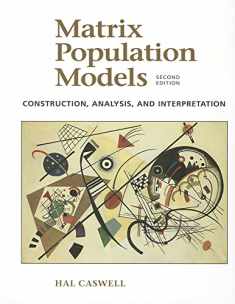
Quantitative Conservation Biology: Theory and Practice of Population Viability Analysis
Book details
Summary
Description
Conservation biology relies not only on the general concepts, but on the specific methods, of population ecology to both understand and predict the viability of rare and endangered species and to determine how best to manage these populations. The need to conduct quantitative analyses of viability and management has spawned the field of "population viability analysis," or PVA, which, in turn, has driven much of the recent development of useful and realistic population analysis and modeling in ecology in general. However, despite calls for the increased use of PVA in real-world settings--developing recovery plans for endangered species, for example--a misperception remains among field-oriented conservation biologists that PVA models can only be constructed and understood by a select group of mathematical population ecologists.
Part of the reason for the ongoing gap between conservation practitioners and population modelers has been the lack of an easy-to-understand introduction to PVA for conservation biologists with little prior exposure to mathematical modeling as well as in-depth coverage of the underlying theory and its applications. Quantitative Conservation Biology fills this void through a unified presentation of the three major areas of PVA: count-based, demographic, and multi-site, or metapopulation, models. The authors first present general concepts and approaches to viability assessment. Then, in sections addressing each of the three fields of PVA, they guide the reader from considerations for collection and analysis of data to model construction, analysis, and interpretation, progressing from simple to complex approaches to answering PVA questions. Detailed case studies use data from real endangered species, and computer programs to perform all described analyses accompany the text.
The goal of this book is to provide practical, intelligible, and intuitive explanations of population modeling to empirical ecologists and conservation biologists. Modeling methods that do not require large amounts of data (typically unavailable for endangered species) are emphasized. As such, the book is appropriate for undergraduate and graduate students interested in quantitative conservation biology, managers charged with preserving endangered species, and, in short, for any conservation biologist or ecologist seeking to better understand the analysis and modeling of population data.
RESOURCES
Downloadable MATLAB programs included as boxes in the text are available to students and instructors.


We would LOVE it if you could help us and other readers by reviewing the book
Book review




